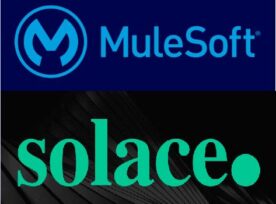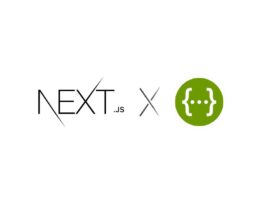Introduction One of the big drivers of adopting containers to deploy microservices is the elasticity provided by platforms like Kubernetes. The ability to quickly scale applications up and down according to current demand can cut your spending by more than half, and add a few 9s to your SLAs. Because it’s so easy to setup […]
Integration + IT Modernization
Integration WITH CLICK, WITHOUT CODE
Yes! It is possible to create integration with click, without code. You can quickly and easily build flows to integrate systems and automate integration tasks just using clicks. This makes integration as simple as a few clicks for non-developers. This can be done through Mulesoft Composer. Let’s go in depth and find out how the […]
Kubernetes Multi-Cluster Management – Part 3
Introduction In part I of our Kubernetes multi-cluster management series, we’ve talked about the basics of GitOps and explained why you should really consider GitOps as a central tenet of your Kubernetes management strategy. In part II, we looked at a reference implementation of GitOps using ArgoCD, and how to organize your GitOps repositories for […]
Webpack Builds Too Slow? Try ESBuild-loader Plugin.
“My project is not ready to move away from webpack and deal with migration issues just yet.” “I want to speed up my project builds without having to completely uproot webpack.” If either of the statements above applies to you, please consider the ESBuild-loader plugin for webpack. This nifty little plugin essentially utilizes the amazing […]
Create Workato Custom Connector Locally
Workato Introduction Workato is a low-code/no-code, cloud-based iPaaS Solution that is hosted on public cloud infrastructure from Google Cloud Platform and Amazon Web Services (AWS). It means everything you create here is a drag-and-drop application component that resides on cloud. Workato Connector To achieve any automation in the Workato tool, we create a recipe. The […]
Perficient and Pega: Working Together to Support Caseworkers
Child welfare caseworkers are among the most overworked government employees, they shoulder the responsibility for the well-being and safety of our most vulnerable population – children. The work of today’s caseworkers is limited by disjointed processes and siloed data. These aging, disparate legacy systems do not support their work in a timely and efficient manner. […]
Leveraging MuleSoft’s API Led Connectivity and Event-Driven Architecture with Solace
Organizations today are going into a rapid digital transformation. With MuleSoft’s API Led connectivity approach, the integration strategy of the enterprises is now going towards more reusability with quicker deliverables of projects through discovery, self-service, and reusability. But what if we mix the flavor of Event Driven Architecture also into the Enterprise’s Integration Strategy? With this blog, […]
Getting Started with ServiceNow – Performance Analytics
Why Performance Analytics? It is crucial for an organization to have reliable and efficient services. However, such services are not always easy to use and may not have the visibility, alignment, and reporting that you are looking for. With the help of ServiceNow’s performance analytics, you can quickly and effectively make decisions with pre-built KPIs […]
Next.js API, Swagger UI & OpenAPI Specification
REST API is king when it comes to writing server-side logic and providing data to the client-side. As your team and solution scale upward, your team’s API documentation workflow will need a strategy to maintain clear and high-level documentation. My recommendation is use OpenAPI Specification and Swagger. OpenAPI Specification (OSA) is a standard for writing […]
An Introduction of Azure Sentinel
An Introduction of Azure Sentinel Microsoft Sentinel is a solution for a variety of issues including intelligence analysis, detecting uncovered threats, investigating suspicious activity, enterprising monitoring, and rapid response. Sentinel is a Security Information and Event Management (SIEM) and Security Orchestration, Automation, and Response (SOAR) service in the cloud. Today, I will discuss Azure Sentinel’s […]
What is Bravo for Power BI?
What is Bravo for Power BI? Bravo studio is a design before, no code tool which allows you to turn your app designs and prototypes into real publishable mobile apps (both iOS and Android). You can use Bravo to build even complex apps by connecting your design to external tools via APIs. In this blog, […]
Ready or Not, GA4 is Coming
Google Analytics – the linchpin of every digital marketer’s data reporting schema – is set to go through some big changes in the next year. As I detailed earlier this year, Google has announced that in 2023 they will deprecate Universal Analytics (UA), the version of Google Analytics that we have become accustomed to over […]











